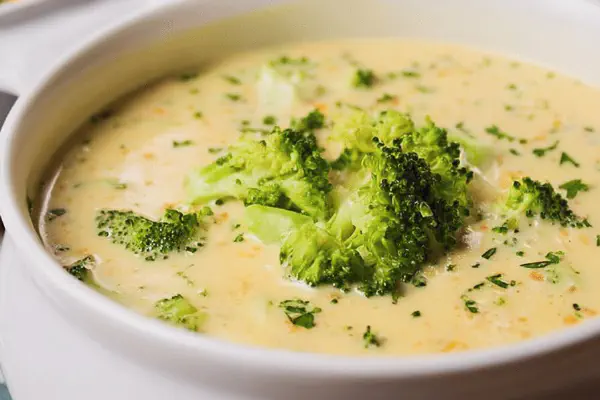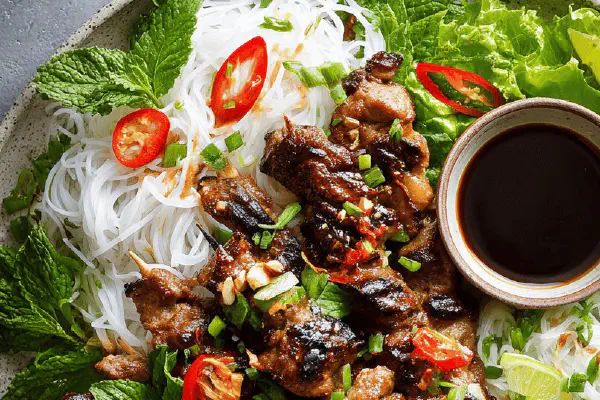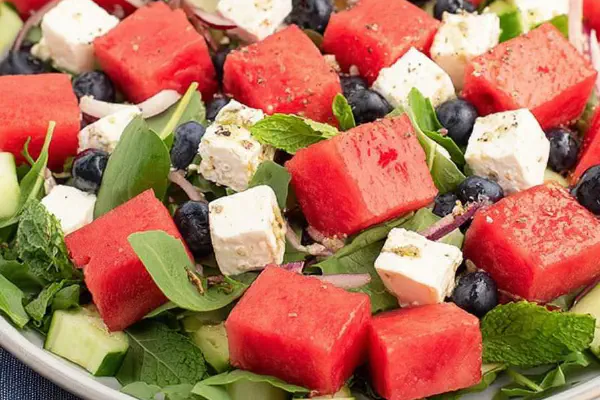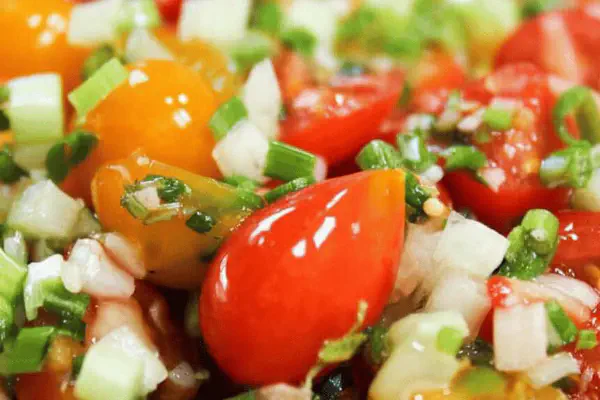Pork Bok Choy Salad
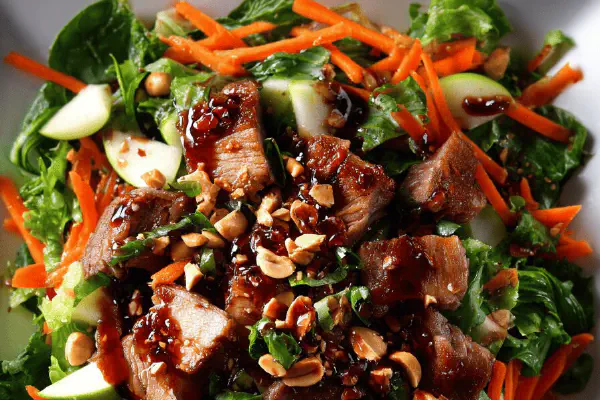
By Emma
Certified Culinary Professional
Ingredients
Teriyaki Dressing
- 55 ml (3 tablespoons) soy sauce
- 50 g (3 tablespoons) light brown sugar, lightly packed
- 40 ml (2 1/2 tablespoons) molasses
- 25 ml (1 1/2 tablespoons) rice vinegar
- 1 small shallot, finely sliced
- 2 garlic cloves, minced
- 1 tablespoon fresh grated ginger
- 3 ml (3/4 teaspoon) sambal oelek
Salad
- 2 pork tenderloin filets, approx 325 g (3/4 lb) each
- 25 ml (1 1/2 tablespoons) olive oil
- 400 g (14 oz) baby bok choy leaves, separated and blanched
- 3 carrots, julienned
- 1 tart green apple, julienned
- 1 green onion, chopped
- 20 ml (4 teaspoons) fresh lime juice
- 35 g (1/5 cup) roasted unsalted peanuts, chopped
- Salt and freshly ground pepper
About the ingredients
Method
Teriyaki Dressing
- 1. Combine soy sauce, brown sugar, molasses, and rice vinegar in a small saucepan. Add shallots, garlic, grated ginger, and sambal oelek. Heat over medium until boiling, then reduce to a simmer. Let simmer 8-10 minutes, stirring occasionally until the sauce thickens and turns syrupy. You'll smell sweet garlic and ginger notes intensifying. Remove from heat; cool completely before chilling in fridge. Sauce should coat back of spoon; too thin means simmer longer.
Salad
- 2. Preheat oven to 205 C (400 F). Rack in center position. Meanwhile, pat pork dry; rub with olive oil, salt, and pepper. Heat a heavy skillet over medium-high heat until shimmering hot. Sear pork, turning till all sides are golden brown—listen for that searing sizzle that means flavor. Transfer skillet to oven. Roast 13-17 minutes; internal temp 62-64 C (145-147 F) for medium. Carry-over heat finishes cooking while resting.
- 3. Remove pork; cover loosely with foil. Rest 8-10 minutes. Resting redistributes juices, keeps meat juicy, not dry or tough. Slice pork thinly across the grain.
- 4. Meanwhile, blanch bok choy leaves in boiling salted water 30 seconds till just wilted but vibrant green. Drain well; shocking in ice water optional to halt cooking if prep ahead.
- 5. In large bowl, toss bok choy, julienne carrots, apple, and green onions with half the teriyaki dressing and lime juice. Taste. Add pinch salt or splash more lime if brightness dull. This step is where textures contrast; crisp apple meets tender bok choy leaves, sweet carrots give a fresh crunch.
- 6. Divide salad onto plates, top with sliced pork. Drizzle remaining teriyaki sauce over everything. Sprinkle peanuts last for crunch and nutty aroma right before serving; adds texture contrast and flecks of toasted brown.
- 7. Serve immediately for best texture contrast. Leftover pork can be thinly sliced cold for packed lunches or grilled quickly for a second round.
Cooking tips
Chef's notes
- 💡 Start sauce on low heat; sugar must melt slowly or burns bitter. Watch color shift. Garlic smell changes from sharp to mellow as sauce thickens. Keep stir intervals irregular; syrup texture clues readiness. Sauce too thin- simmer longer. Cool fully before fridge to prevent clumps. Sauce thickens more cold; rewarm gently for pourable consistency.
- 💡 Searing pork needs pan screaming hot. No moves till edges release cleanly—tug early and meat tears, ruining crust. Sear all sides quick, listen for crackle sizzle. Oven finishes interior; temp in center hits medium at 62-64 C. Use thermometer or finger press, firmness tells when exact. Rest pork loosely covered; foil tight steams meat, breaks crust and juiciness.
- 💡 Bok choy blanch quick; no longer than 30 seconds or stalks get soft, leaves dull. Shock in ice bath if prepping in advance to save crunch. Toss salad gently, avoid bruising delicate leaves or apple dilutes bright snap. Add dressing slowly, taste mid-toss to balance lime and salt — brightness dulls fast if overdressed.
- 💡 If no sambal oelek, crushed red pepper or cracked black pepper adds heat punch. Molasses deepens glaze but dark brown sugar alone works softer. Swap pork tenderloin for chops or chicken thighs: adjust roasting time accordingly. Peanuts replaceable with cashews or almonds, roast till aroma pops. Keep garlic finely minced to spread flavor without overpowering one single bite.
- 💡 Rest pork at least 8 minutes. Importance learned hard way—too short and juices escape with first slice, meat dries fast. While resting, blanch and prep veggies. Slice pork thin across grain for tenderness. Drizzle remaining sauce last; puddled on plate means soggy salad. Peanuts sprinkle top last second; preserves crunch and nutty aroma. Serve immediately for contrast between warm pork and crisp salad.
Common questions
How to fix sauce if too thin?
Simmer longer, lower heat. Stir often watch consistency shifts. Can cool sauce; thickens more cold. Reheat gently for pour. Overboil burns sugar bitter. If sauce lumpy cold, warm slowly to dissolve clumps.
What if no bok choy?
Use napa cabbage or spinach quick blanched. Texture different but fresh green notes remain. Avoid hearty kale here, overpowers. Blanching time same - just till leaves soften, stays vibrant. Crunch lowers, but overall mix still works.
Pork gets dry?
Rest longer loosely covered foil. Rest time redistributes juices, stops heat penetrating further. Dont slice hot meat direct or juices leak quick. If unsure, pull pork from oven few degrees early; carryover heat finishes. Over-cooking common mistake here.
Storing leftovers?
Pork reheat low and slow in pan or microwave covered. Salad best eaten fresh but if needed keep dressing separate. Store salad and pork in airtight containers, fridge max 2 days. Peanuts best fresh for crunch; toasted nuts soften storing. Lime juice freshness fades fast; add extra when serving.
